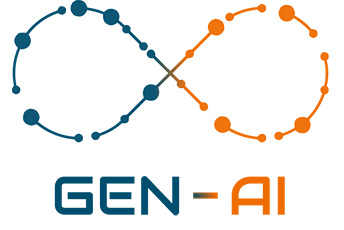Analysis of Consumer Emotional Reactions to Advertising Campaigns Using the REST API /virtualbot/sentiment/sentiment_analisys
Market: Marketing agencies, social media, consumer brands.
Description:
The REST API /virtualbot/sentiment/sentiment_analisys, which utilizes advanced OCR and a multimodal LLM, allows for real-time analysis of consumer emotions and intentions in response to advertising campaigns. This analysis evaluates comments, reactions, and posts related to a brand or campaign, helping adjust the message and tone based on the audience’s emotions and intentions. The system provides brands with a clear view of how a campaign is perceived and enables them to optimize their marketing strategies more efficiently.
The system processes both written text and images containing text, making it useful for evaluating a wide range of platforms, from social media to forums and comment sections. By using a multimodal LLM, the system classifies and contextualizes emotional information obtained, helping brands react and adjust their campaigns quickly and accurately.
Specific Benefits:
- Improvement in Campaign Effectiveness:
- Real-Time Analysis of Emotional Reactions: The system allows real-time evaluation of public emotional reactions to advertising campaigns. This enables the message and tone to be quickly adjusted based on observed reactions, improving the emotional connection between the brand and consumers.
- Message Adjustment Based on Intentions: The intention analysis helps identify what consumers are looking for or expecting, facilitating content adjustments to make the campaign more relevant and effective.
- Optimization of Marketing Strategies:
- Adjustment Based on Sentiments: By identifying whether reactions to the campaign are positive, negative, or neutral, brands can adjust their approach to improve the emotional effectiveness of the campaign, highlighting aspects that generate positive responses and addressing those that provoke frustration or indifference.
- Real-Time Optimization: Campaigns can be optimized on the go, allowing for greater investment in approaches that generate positive emotions and adjustments to those that generate frustration or fail to connect with the audience.
- Personalization of Communication with the Public:
- Emotion-Adapted Responses: By detecting consumer emotions and intentions in comments and posts, brands can personalize their communication to better align with prevailing emotions. This not only improves campaign perception but also allows brands to react more empathetically.
- Segmentation by Emotional Reaction: The system can segment consumers based on their emotional reactions, allowing campaigns to be tailored according to the dominant emotional response in each audience segment.
- Early Detection of Reputation Crises:
- Monitoring of Negative Emotions: By identifying negative emotions such as frustration or dissatisfaction in public comments, brands can act quickly to prevent these emotions from escalating into a reputation crisis.
- Crisis Prevention: The ability to monitor and react to negative emotions in real-time allows brands to anticipate potential crises, managing communications effectively and resolving issues before they spread.
- Improvement in Customer Loyalty:
- Creating Emotional Connections: By better understanding the emotions provoked by a campaign, brands can craft messages that align more closely with consumer feelings, creating a stronger emotional connection and increasing customer loyalty.
- Reinforcement of Brand Image: By adjusting tone and messaging to align with the public’s positive emotions, brands can reinforce their positive image and foster long-term relationships with consumers.
- Identification of Market Opportunities:
- Detection of New Trends: The analysis of public emotions and intentions can help brands identify new trends or changes in consumer behavior, allowing them to adapt their campaigns and products to capitalize on emerging opportunities.
- Cross-Selling Opportunities: By analyzing consumer intentions, brands can identify cross-selling opportunities, adjusting campaigns to offer additional products or services aligned with the audience’s interests.
Key System Integrations:
- Digital Marketing Platforms:
- Recommended platforms: HubSpot, Marketo, Google Ads.
- How it works: The system integrates with digital marketing tools to adjust advertising campaigns in real-time, using emotion and intention analysis to enhance the effectiveness and personalization of the campaigns.
- Social Media Platforms:
- Recommended platforms: Facebook, Instagram, Twitter.
- How it works: Analyzing user comments and posts on social media allows campaign content to be adjusted based on the predominant public emotions, improving the emotional connection with consumers.
- Marketing Automation Platforms:
- Recommended platforms: Mailchimp, Pardot, ActiveCampaign.
- How it works: Emotion analysis can be integrated with automation systems to segment consumers and personalize messages based on the emotional reactions detected in campaigns.
- Data Analytics Tools:
- Recommended platforms: Google Analytics, Tableau, Power BI.
- How it works: Data on public emotions and intentions can be integrated into data analytics platforms to gain deeper insights into campaign impact and optimize future marketing strategies.
Conclusion:
The REST API /virtualbot/sentiment/sentiment_analisys is an essential tool for marketing agencies and consumer brands, enabling real-time analysis of the public’s emotions, sentiments, and intentions toward advertising campaigns. By adjusting tone and message according to the emotional reactions of the public, brands can optimize their marketing strategies, improve campaign effectiveness, and strengthen customer loyalty, all while preventing potential reputation crises.


